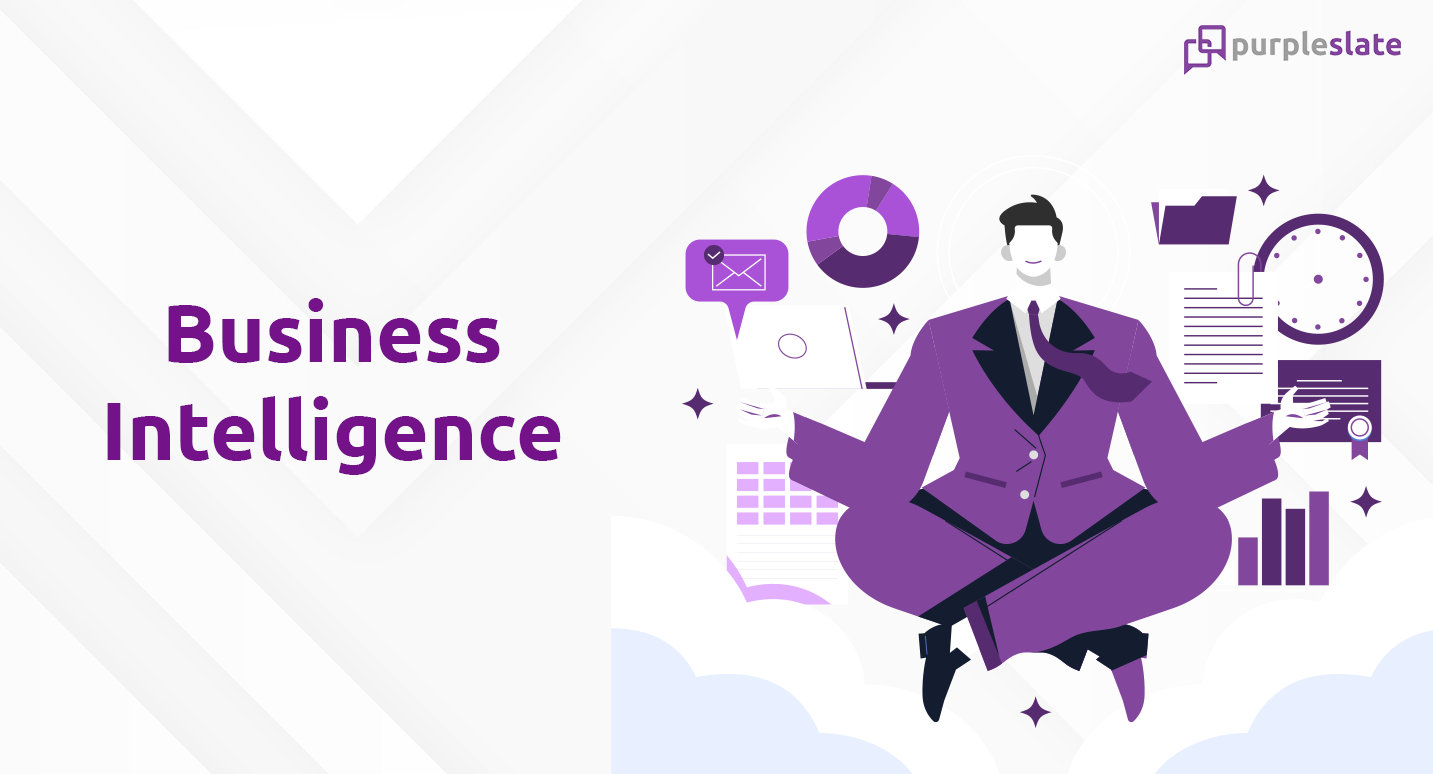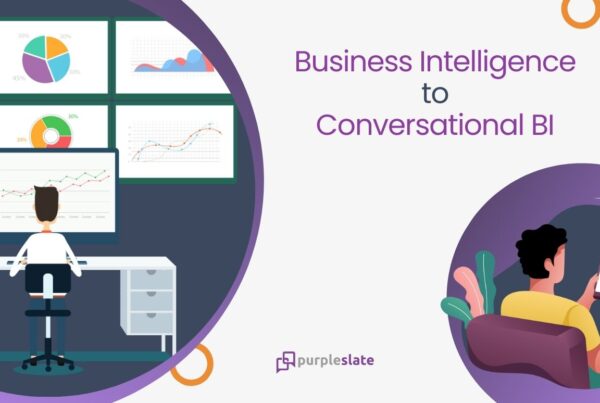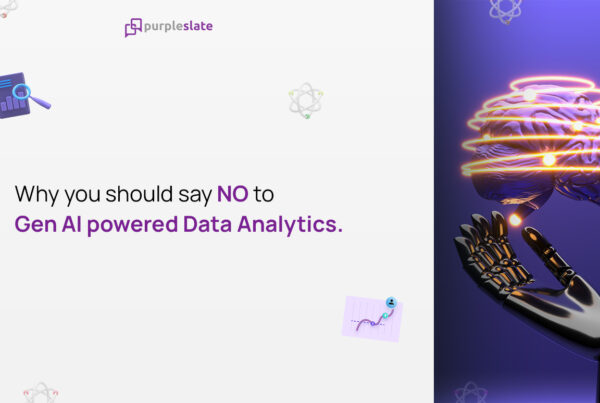
Introduction
In this age of information supremacy, data is the new oil. Those who have access to information and insights, definitely have a headstart. Today’s organizations are sitting on a goldmine of information hidden deep within the zettabytes of data that they’re collecting. However, raw data is Greek and Latin for business leaders. They will need to transform data into insights to aid the challenges in data-driven decision-making with the help of business intelligence.
Decoding Business Intelligence
“The global business intelligence market is set to reach USD 33.3 billion by 2025 with a Compounded Annual Growth Rate (CAGR) of 7.6% Y-o-Y” – Markets and Markets
Before understanding how business intelligence aids organizations all over the world in deriving data-driven decision making, it’s imperative to define the term itself.
HBR defines business intelligence as “The use of data to manage day-to-day operational management within a business. Leaders employ business intelligence tools and experts when they want to collect and house data about current operations, maximize workflow, produce informative reports, and achieve their current business goals.”
Business intelligence enables organizations to break down data into actionable insights, making sure that leaders take well-informed decisions. A BI system ingests data both present and past, analyzes them and presents the findings in an interactive easy to understand visual format. Some of the most known visual formats include dashboards, reports, scorecards, various charts, and graphs.
Business intelligence is a key example of descriptive analytics where the emphasis is on how the business is performing today and how it performed in the past. It does not go into the reasons why the performance was low or high.
Business Intelligence Vs Business Analytics – Analyzing the Key Differences
Business intelligence and business analytics are two terms that are used interchangeably very often. Though the two disciplines work together and have great similarities, business intelligence is more to do with understanding “what happened” and “what is happening” by analyzing historical and current data.
Business analytics is more diagnostic and predictive. This means that business analytics focuses on “why this is happening” and “what might happen in the future” along with understanding “what happened”.
BI vs BA
| Parameter | Business Intelligence | Business Analytics |
| Type | Descriptive in nature. Tries to understand what happened and what is happening | Diagnostic, Predictive, and Prescriptive. Tries to unearth a trend and predict future trends |
| Focus | Focus is on solving immediate or momentary problems | Focus is on trying to understand the future direction of the organization |
| Nature | It is tactical, looking for short-term resolutions | It is strategic, looking for long-term impacts |
| Purpose | Used for reporting, analyzing KPI, etc. | Used for quantitative and statistical analysis |
| Users | Majorly business leaders and decision-makers | Data scientists, data engineers, and to some extent business decision-makers |
But at the end of the day, it is imperative that both work together to advance business goals. Hence, they play an important role in every organization.
Critical Components of a Business Intelligence System
Four major components make up a robust and efficient business intelligence system.
Data Storage
Once the data is pre-processed, it is loaded onto a data mart or a data warehouse, or any centralized data storage system with processing capabilities and supports business analytics. The data is generally cleaned and well processed before loading onto the storage system to ensure the quality of business intelligence reports.
Extract Transform Load (ETL)
Data is fragmented and is generally spread across multiple sources. To bring them to a single centralized repository, ETL tools are used. Extract takes care of extracting data from many different sources, transform helps in transforming the data to the required format, and loading is the step where data is loaded onto the target data repository.
OLAP
Online analytical processing (OLAP) is a technology that powers the data discovery capabilities in many business intelligence systems. This technology extracts big data from relational tables and reorganizes it into a multidimensional format, enabling fast processing and insightful data analysis.
Data Visualization
What use is there when leaders cannot make head or tail of the data presented to them? Here is where data visualization comes into play. Data can be broken down to reveal past trends that can be visualized through graphs, charts, or scorecards with different color palettes that focus on key metrics or points that need to be displayed prominently. This is one area where traditional spreadsheets fail to deliver.
Benefits of Investing in Business Intelligence
Business intelligence did not become one of the most sought-after disciplines overnight. The reasons are many, and some top ones are discussed below.
Data-Driven Decision Making
The major advantage of going for a business intelligence tool is that leaders need not just rely on instincts and “gut” feelings before taking action. BI tools give clarity on what happened and ensure that similar mistakes are not repeated.
Optimizing Functional Performance
Data flow from various functions within the organization provides a treasure trove of information on how well the functions perform. This enables business leaders to look into process redundancies, bottlenecks, and any other issues to be addressed as a priority. Repeating this exercise gradually optimizes the functional performance and puts it in an almost automated mode.
Benchmarking Against Peers
A little bit of competition is something that everyone enjoys and at times acts as a motivation tool. But the same competition can also become the organization’s most trusted ally by introducing best practices. And how can an organization know its performance? By breaking down the data and benchmarking the results against peers. A BI tool makes sure that it provides accurate information in terms of performance results.
Improved Customer and Employee Experience
One of the key issues in terms of customer experience is disconnected customer engagements. Data from the CRM system to the operations department can solve a lot of problems including but not limited to wrong order deliveries or delayed refunds. Better customer experience has always been dependent on crunching data and developing a better service strategy. BI can also help track anomalies in employee behavior and helps leaders improve the overall employee experience.
Improved Revenue Generation
All of these above mentioned advantages ultimately boil down to improving the bottom line of the organization. Better informed decisions, highly productive employees, happy customers, and optimized functions are all a mark of a successful business.
Self-Service Business Intelligence
Self-service BI tools came with the intent to reduce the dependency on internal tech or data teams to generate BI reports. It enables line managers and functional leads to generate BI reports or dashboards on their end without IT support. A minimum amount of training is required, however, most of them are developed in a no-code or low-code framework. This ensures that simple click actions and basic query knowledge are enough to visualize data in the required format.
One key point to keep in mind with self service business intelligence tools is that every department or function will have its format. This can be chaotic in the long run, especially in projects requiring inter-departmental collaborations. Sensitizing the end users on data security best practices is also another important point to note.
Closing Notes
Summing up, business intelligence has brought tons of edge to the world of business. There were days when businesses used to fail repeatedly until a new solution came up. This habit of trial and error was effectively replaced by data-driven business decisions specifically because of business intelligence.
Interested to know more about other data analytics terms? Head over to our data glossary page where more data management and analytics-related concepts are discussed.




